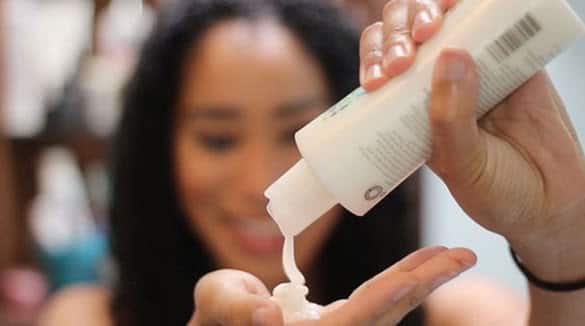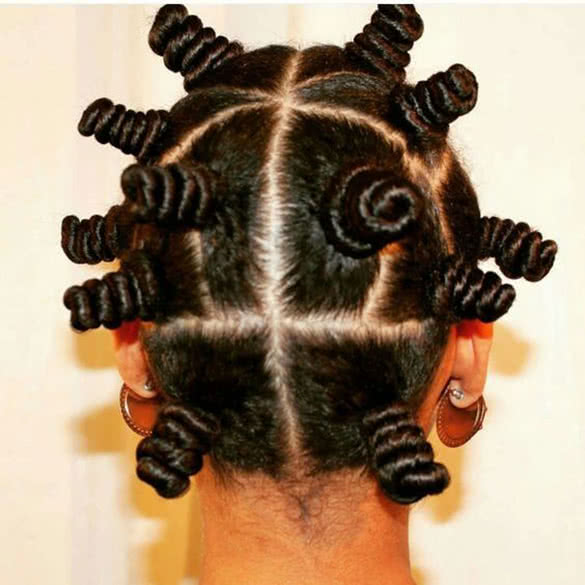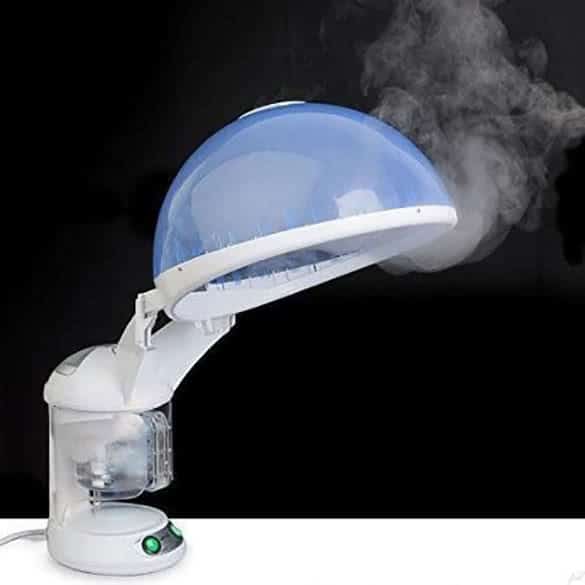Dry hair is a universal complaint of people with natural hair. The tighter your kinks and coils, the more likely it is for your hair to be dry. Additionally, if your hair has a low porosity, the cuticles are tightly closed and the result is that it makes it difficult for moisture to enter the hair shaft.
There are a number of key practices on how to moisturize dry natural hair. Let’s take a look at some of the practices to boost and maintain the moisture levels that your hair deserves.
Deep condition

Deep conditioning is absolutely essential for maintaining healthy, moisturized natural hair. Deep conditioning restores moisture that is lost from the hair due to environmental factors such as very hot or very cold air.
In the summer, the heat leaves the hair dry and parched and in the winter, cold air also pulls moisture from the hair due to the fact that cold air lacks moisture. Just think of how your skin becomes dry when exposed to cold air and you’ll understand.
The tighter your kinks and coils, the more often you need to deep condition and the thicker your deep conditioner should be. There are some lightweight, deep conditioners that can pack a powerful moisture punch, however, in general, the thicker your deep conditioner, the more likely moisturizing and nourishing it is to your thirsty hair.
When deep conditioning, ensure that you follow the instructions as described on the product packaging. Deep conditioners are formulated to work within a specific time frame, so while life can get in the way and what was initially supposed to be ten minutes became an hour and a half because your kids woke up or you realized you need to make a supermarket run, do not make a habit of leaving on your deep conditioner for excessive periods of time.
There are no benefits to be obtained from the practice and it can, in fact, lead to negative effects such as product build up.
Use a hair steamer
Steaming the hair is a process that is hugely beneficial for hair health and moisture retention. Steaming uses moist heat in order to open the cuticles of the hair, which permits all the beneficial, natural ingredients in your conditioner to enter the hair. This means all these ingredients are able to benefit and nourish the hair from the inside.
Steaming helps fight both dryness and breakage and the scalp also benefits from steaming as well. Steaming unclogs the pores of the scalp and also eases scalp irritation that results from dryness. Additional benefits of steaming include improving the elasticity of the hair, enhancing the definition of your curls and making color hair color last longer.
Alternately, during your deep conditioning process, you may cover your hair with a plastic cap and the wrap a warm towel around your hair in order to add some additional moist heat to the hair to assist the process.
Look for moisturizing ingredients in your products
There are certain ingredients that are widely used in moisturizing products such as conditioners, leave in conditioners, moisturizers and certain types of stylers. These ingredients either provide moisture to the hair or attract moisture to it.
They also often help to condition and soften the hair in order to make it more manageable. Ingredients to look for are honey, castor oil, glycerine, panthenol, and aloe vera.
Also be on the lookout for conditioning or fatty alcohols. These types of alcohols are usually derived from natural sources such as coconut and palm oil, hence their inclusion in many products for natural hair. Examples of conditioning alcohols are behenyl alcohol, stearyl alcohol, cetyl alcohol, myristyl alcohol, lauryl alcohol and Cetearyl alcohol (combination of cetyl and stearyl alcohols).
These alcohols are beneficial to the hair and help impart moisture and make natural hair more manageable.
Steps to moisturize hair
Hair does not need to be freshly washed, but it should be free from product buildup. Product build up creates a barrier between the hair and the products you apply. Instead of penetrating into the hair, the products you apply will just sit on top of the build up that’s coating your hair. Here are the steps to follow to moisturize your natural hair.
1. Apply your source of moisture. This can be plain water, a leave in conditioner, aloe vera juice or gel or some other product that has water listed as its principal ingredient.
2. After adding your moisturizer, apply a small amount of oil or butter to lock or seal the moisture into the hair. Since oil and water do not mix the oil acts as a bit of a gate to keep the moisture in and slow its evaporation from the hair. The barrier is a breathable one.
The LOC Method

The LOC method is a widely-followed way of using and applying specific types of products to natural hair in a designated order. LOC is an acronym for liquid or leave-in conditioner, oil, and cream. The products are added to the hair, layer by layer in that order. Layering the products in this order helps to maintain moisture for longer periods for many naturals.
Liquid
Your liquid can be plain water, rose water, aloe vera juice, leave in conditioner or any combination thereof. The one you chose is largely due to personal preference.
Oil
Oil is oil so this step is pretty straight forward. You may use any oil of your choosing or even blend different oils if that is your preference. Butters such as shea butter, cocoa butter, mango butter or any blend of butter may also be used.
Cream
The final step of the LOC method involves using a product that is creamy. It may any type of product as long as the product is creamy in texture. Here your product could potentially be a styler, hair pudding or creamy moisturizer. Ideally, you want this product to be a little on the heavy side to seal the previous layers in well.
Butters and oils are excellent sealants that create a layer on the hair strand that reduces moisture loss to the atmosphere. Using your cream or heavy butter as your last step means that the water stays trapped inside the hair longer. This is particularly helpful to naturalistas who struggle with consistent dryness.
Follow the instructions below to incorporate the LOC method as a part of your moisturizing regimen.
STEP 1 – Apply water, leave-in conditioner to freshly washed hair. Focus on your ends and the areas most prone to being dry.
STEP 2 – Apply your oil to seal in the moisturizer. Keep this layer thin because you will be adding your cream (the heaviest of the 3 products) next and you do not want to weigh your hair down.
STEP 3 – Seal everything in with a creamy, butter based moisturizer
STEP 4 – Style hair as usual.
The density of your hair (how many strands of hair are on your head) and their porosity (how readily they allow products to enter the hair) will play a big role in the effectiveness of the LOC method for your hair type so pay attention to what your hair likes and responds to best.
If you’ve been natural for longer than a second you will have realized that there is no one size fits all. Use the products that work well for your hair and if the LOC method doesn’t work for you there’s a modified version called the LCO method, which switches the order of application of the cream and oil.
Things to avoid

Avoid heat entirely or use it only sparingly. Heat dehydrates the hair from within and can damage the protein structure of the hair such that hair is unable to bond with water molecules effectively or makes moisture escape more readily.
Avoid alcohols that are drying to the hair. These include propanol, alcohol denat, propyl alcohol, ethanol, isopropyl alcohol and SD alcohol 40
Avoid wearing your hair out in extremely hot or extremely cold conditions as these conditions pull moisture from the hair.
Getting hair moisturized and helping it stay that way can be a difficult process for some naturals. Sometimes it requires a lot of experimentation and patience. Allow yourself to enough time to assess if your products are working, as improvements aren’t always immediately obvious.
Make changes gradually and don’t change too much at once, as it will make it more difficult to determine the products that are responsible for any change, positive or otherwise.













Add Comment